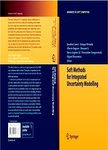版权所有:内蒙古大学图书馆 技术提供:维普资讯• 智图
内蒙古自治区呼和浩特市赛罕区大学西街235号 邮编: 010021

丛 书 名:Advances in Intelligent and Soft Computing
版本说明:1
I S B N:(纸本) 9783540347767
出 版 社:Springer Berlin Heidelberg
出 版 年:2006年
页 数:X, 413页
主 题 词:Artificial Intelligence Mathematical and Computational Engineering Applications of Mathematics
学科分类:12[管理学] 1201[管理学-管理科学与工程(可授管理学、工学学位)] 081104[工学-模式识别与智能系统] 08[工学] 0835[工学-软件工程] 0811[工学-控制科学与工程] 0812[工学-计算机科学与技术(可授工学、理学学位)]
摘 要:The idea of soft computing emerged in the early 1990s from the fuzzy systems c- munity, and refers to an understanding that the uncertainty, imprecision and ig- rance present in a problem should be explicitly represented and possibly even - ploited rather than either eliminated or ignored in computations. For instance, Zadeh de?ned ‘Soft Computing’ as follows: Soft computing differs from conventional (hard) computing in that, unlike hard computing, it is tolerant of imprecision, uncertainty and partial truth. In effect, the role model for soft computing is the human mind. Recently soft computing has, to some extent, become synonymous with a hybrid approach combining AI techniques including fuzzy systems, neural networks, and biologically inspired methods such as genetic algorithms. Here, however, we adopt a more straightforward de?nition consistent with the original concept. Hence, soft methods are understood as those uncertainty formalisms not part of mainstream s- tistics and probability theory which have typically been developed within the AI and *** methodologies which are complementary to conventional statistics and probability theory.